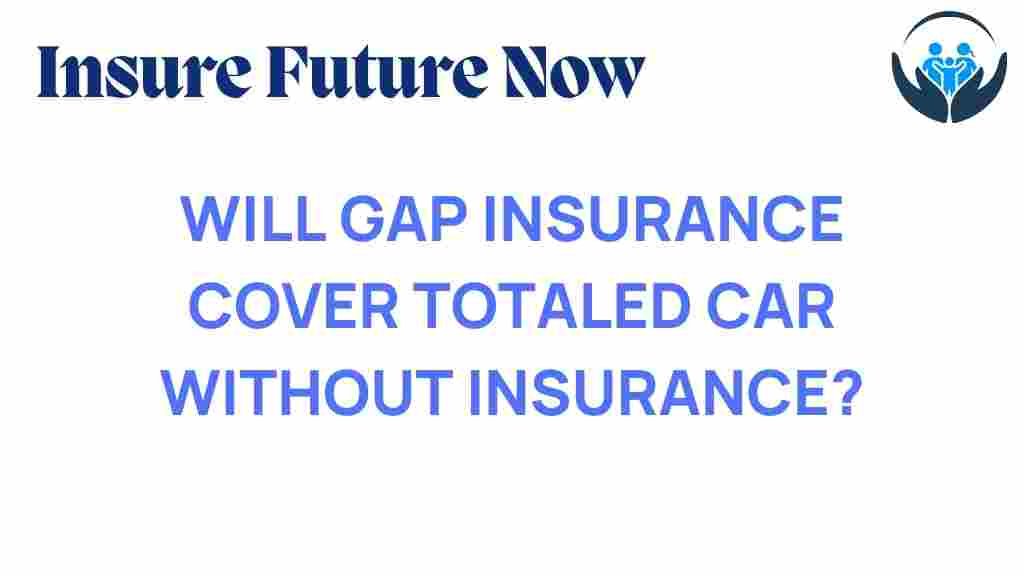Unraveling the Mystery: Will Gap Insurance Cover a Totaled Car?
When it comes to auto insurance, understanding the nuances can be complex. One area that often raises questions is gap insurance and its role in the event of a totaled car. If you’ve ever wondered about the difference between standard insurance coverage and the additional protection provided by gap insurance, you’re not alone. In this article, we’ll explore what gap insurance is, how it works, and whether it can provide the financial protection you need in the unfortunate event of a vehicle loss due to a car accident.
What is Gap Insurance?
Gap insurance, or Guaranteed Asset Protection insurance, is an optional form of auto insurance that covers the difference between what you owe on your car loan and its actual cash value at the time of a total loss. This coverage is especially important for those who have financed or leased their vehicles, as the depreciation of a car can leave owners owing more than the car is worth after an accident.
Why Consider Gap Insurance?
Many consumers may ask themselves if they really need gap insurance. Here are some reasons to consider:
- Depreciation: New cars can lose up to 20% of their value as soon as they are driven off the lot.
- Financed Vehicles: If you financed your car purchase, you might owe more than the car’s current market value.
- Leased Vehicles: Lease agreements often require gap insurance to cover potential losses.
Understanding these factors can help you make an informed decision about whether gap insurance is a necessary component of your insurance policies.
How Does Gap Insurance Work with a Totaled Car?
Now, let’s delve into how gap insurance operates when your car is totaled. When a vehicle is declared a total loss, the insurance company will assess its actual cash value (ACV), which considers factors like depreciation and market conditions. Here’s a step-by-step breakdown:
Step 1: Assessing the Total Loss
After a car accident, your vehicle will be evaluated by the insurance company. If the cost of repairs exceeds a certain percentage of the ACV, the vehicle will be classified as a total loss.
Step 2: Determining Actual Cash Value (ACV)
The insurance adjuster will determine the ACV of your car. This amount is typically lower than what you originally paid due to depreciation. For example, if you bought a car for $30,000, it might only be worth $20,000 after a few years.
Step 3: Calculating the Loan Balance
Next, you’ll need to find out how much you still owe on your car loan. This is the principal balance that you are responsible for, which may be higher than the ACV due to financing terms.
Step 4: Claiming Gap Insurance
If your car is totaled, and you have gap insurance, you can file a claim to cover the difference between the ACV offered by your primary insurance and the remaining loan balance. For example:
- ACV: $20,000
- Loan Balance: $25,000
- Gap Insurance Coverage: $5,000
In this scenario, your gap insurance would cover the $5,000 difference, providing you with crucial financial protection.
Important Considerations
When dealing with a total loss and gap insurance, keep these considerations in mind:
- Policy Limits: Check your gap insurance policy for any coverage limits or exclusions.
- Timeframe for Claims: Be aware of the timeframe for filing claims after an accident.
- Documentation: Maintain all documentation related to your vehicle purchase and insurance policies.
Troubleshooting Common Issues with Gap Insurance
Even with gap insurance, you may encounter challenges when dealing with a total loss. Here are some troubleshooting tips:
Issue 1: Disputes Over ACV
If you believe the insurance company has undervalued your vehicle, you have the right to dispute the ACV assessment. Gather evidence such as:
- Recent appraisals or valuations from reputable sources.
- Comparative sales data from similar vehicles in your area.
- Documentation of any recent upgrades or improvements made to the vehicle.
Issue 2: Delays in Claims Processing
If your claim is taking longer than expected, reach out to your insurance adjuster for updates. Maintaining open communication can often expedite the process. Additionally, keep records of all correspondence related to your claim.
Issue 3: Understanding Consumer Rights
As a consumer, you have rights when it comes to insurance claims. Familiarize yourself with your rights and the insurance regulations in your state. If you feel your rights are being violated, consider seeking legal advice or contacting your state’s insurance commissioner.
Conclusion: Is Gap Insurance Worth It?
In conclusion, gap insurance can be a valuable addition to your auto insurance coverage, especially if you have a financed or leased vehicle. It provides essential financial protection in the event of a vehicle loss due to a total loss. Understanding how gap insurance works, the processes involved, and your consumer rights can empower you to make the right choices regarding your insurance coverage.
Ultimately, the decision to purchase gap insurance depends on your individual circumstances, including the type of vehicle you own and your financing situation. If you’re still unsure, consider discussing your options with an insurance professional or visiting resources like the National Association of Insurance Commissioners for further guidance.
For more tips on auto insurance and consumer rights, check out our other articles on insurance policies and financial protection strategies.
This article is in the category Coverage and created by InsureFutureNow Team
